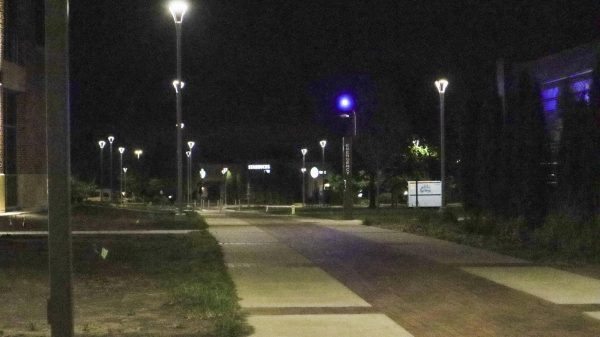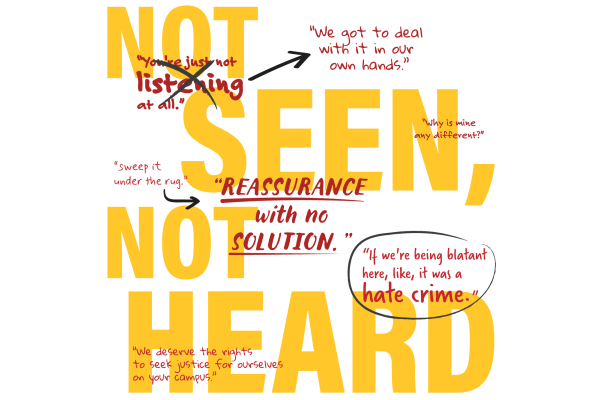Active shooter training provides options for potential situations
Wichita State offers free, one-hour training sessions on what to do in response to an active shooter on campus for faculty, staff and students. The next session is scheduled at 9 a.m. Dec. 16.
An active shooter is a person who is engaged in killing or attempting to kill people in a confined and populated area. In most cases, active shooters use firearms and there is no pattern or method to their selection of victims, according to the Department of Homeland Security’s “Active Shooter Event Quick Reference Guide.”
“Being prepared can be a matter of life and death,” said University Police Capt. Corey Herl.
One of the keys to survival in this situation, he said, is telling yourself that you are willing to do whatever it takes to live. Herl leads the Campus Safety: Active Shooter Incident Planning classroom training. More than 700 faculty, staff and students have completed the training.
Since 2013, there have been at least 156 school shootings in the United States, according to research compiled by Everytown for Gun Safety; the criteria for a school shooting included instances when a firearm was discharged on K-12 school grounds or a college campus.
A pamphlet distributed in the training session outlines three options students can take in an active shooter situation.
One of the first options provided is to flee the area and have an escape route in mind.
“If you get your mind right, the body will follow,” Herl said. “You don’t go into a test thinking you’re going to fail a test, right? Then what happens? You fail the test. You have to tell yourself that you’re going to survive.”
Second, the pamphlet said to hide in an area out of the shooter’s view, block the entrance, silence cell phones and remain quiet.
Third, fight with as much physical aggression as possible only if your life is in imminent danger.
Herl said some of the most valuable advice he can give is commit to action.
“It’s all about giving yourself the best option available,” Herl said, “but whatever you’re going to do — run or hide or fight — you have to commit to it completely.”
Herl said it is hard to convince people they may have to fight for their life in a one-hour training session.
“I wish I had more time than an hour to present [active shooter training],” Herl said, “but at least we can get that much out to people.
“I would rather it never get to the point where there’s an active shooter situation. So much can be prevented before it gets to that point. And that’s a hard stat to measure. It’s difficult to track the success rates of preventative measures, but those are the ones that matter the most.”
Full-time faculty and staff can register for the one-hour classroom training session using the myTraining tab on myWSU. Students should email Sheryl Propst, human resources training manager, at [email protected] to register for training.
Students can also access an active shooter incident online training video through the “HR Online Training” link on the myFinances tab in myWSU.
COPING WITH AN ACTIVE SHOOTER SITUATION
• Be aware of your environment and any possible dangers
• Take note of the two nearest exits in any facility you visit
• If you are in an office, stay there and secure the door
• Attempt to take the active shooter down as a last resort
WAYS TO RESPOND WHEN AN ACTIVE SHOOTER IS IN YOUR VICINITY
Run
• Have an escape route and plan in mind
• Leave your belongings behind
• Keep your hands visible
Hide
• Hide in an area out of the shooter’s view
• Block entry to your hiding place and lock the doors
• Silence your cell phone
Fight
• Take action as a last resort and only when your life is in imminent danger
• Attempt to incapacitate the shooter
• Act with physical aggression and throw items at the shooter
CALL 911 WHEN IT IS SAFE TO DO SO

Chance Swaim was the Editor in Chief of The Sunflower from fall 2017 to spring 2018.
Swaim was a graduate student in the English Department working...












